Well it’s been a while since we’ve done a Retro Review… six months to be exact! I honestly can’t believe it’s been that long, and it certainly doesn’t feel like it. Well for this installment I wanted to take us back to the year of our Lord 1999!
The day was Thursday, September 23 and TLC was sitting Unpretty atop the Billboard charts, American Beauty was the number one film in the country, Steve Jobs had just announced the PowerMac G4 a month earlier, and we were still getting a feel for the first Tony Hawk’s Pro Skater game. It was on that day that we, in North America, were gifted what I would say is one of the more overlooked games of my childhood — Metal Gear Solid: VR Missions.

When Metal Gear Solid came out in early September of 1998 it transformed the stealth genre with it’s realistic weapons and tactics. Sure earlier stealth games existed and made use of things like line-of-sight, sound, and lighting but MGS just felt different; it felt gritty and real. You played as the legendary soldier Solid Snake sent to infiltrate a nuclear weapons disposal facility at Shadow Moses Island off the coast of Alaska that had been taken over by a group of terrorists. As you play through the game you have to use your skill and wit to overcome the Genome Army, the members of Special Operations unit Foxhound, and — of course — Metal Gear.
Unlike a lot of stealth/action games out there at the time where you run and gun — looking specifically at you Siphon Filter — Snake isn’t equipped to win a gun fight with the enemy he faces; that’s where stealth comes in. Using weapons in MGS is more than a little clunky and takes some getting used to, and Snake starts the mission with very little health. 3 or 4 shots are usually enough to take him down, so staying out of sight is a big mechanic of the game.
Integral
The following summer (June 24, 1999) the game was updated and re-released in Japan as Metal Gear Solid: Integral. The revamp added features that were present in the North American release of the game including alternative difficulty modes, english voices, and a tuxedo skin for Snake, but the biggest addition was a third disc that included quite a few VR training missions that target specific sneaking and weapons tactics used in the game.

Integral never released outside of Japan so instead Konami simply released the third disc as it’s own stand-alone title in the West. In PAL regions it was called Metal Gear Solid: Special Missions, but in North America it was renamed VR Missions.
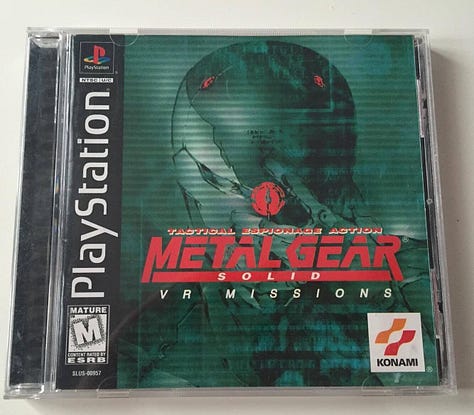
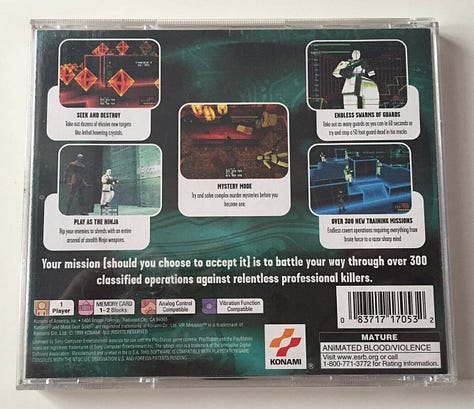
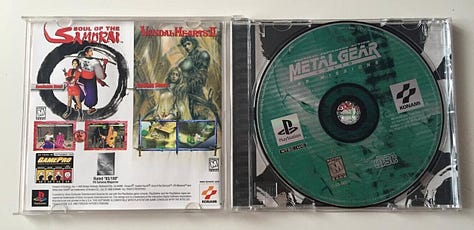
First Impressions
I was in middle school when MGS and VR Missions came out. My friend Ryan and I would play the MGS demo — you know, the one you could get from Pizza Hut back in the day — on his PlayStation over and over until he finally got the full game.

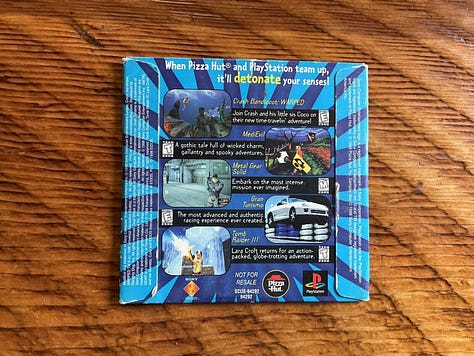
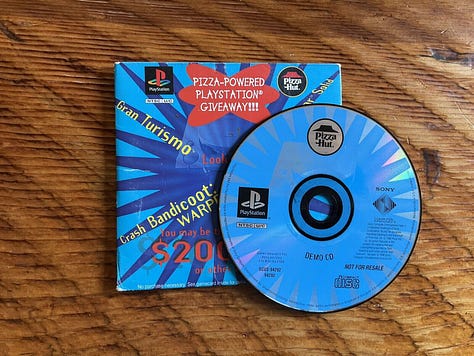
Unfortunately he never got the VR Missions and I didn’t have a PlayStation — I had a Nintendo 64 at the time — so I never got to play it back then. I did know about it though. I remember seeing it on the shelf at Software Etc. and in gaming magazines at the time.

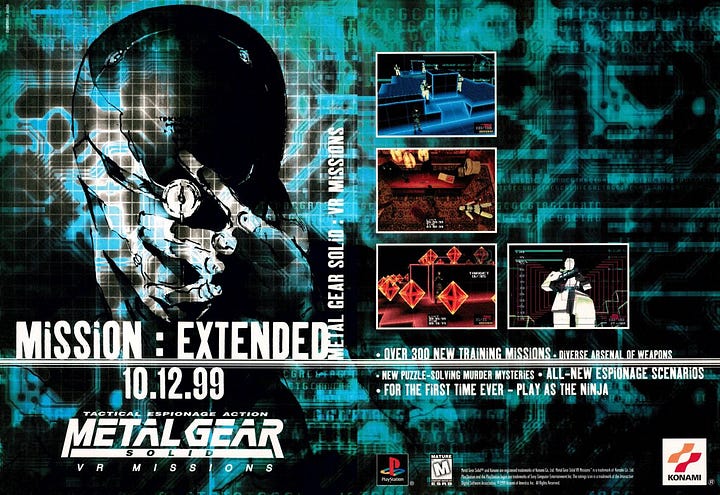
While I’ve been a huge Metal Gear fan for the the last 25 years — and it just hit me that that is a quarter of a century… I feel so old — I never actually got around to playing VR Missions. I never bought the game when I got my PS2 like I did with MGS and a few other PS1 games, and I never picked it up after I got back into gaming around 2016 or so; so this was my first time actually playing the game which I think makes this review even more fun!
Story
If there was a story to this game, I sure never found it. However, there are direct references to the game in story cutscenes in Metal Gear Solid 2 so as far as I’m concerned, MGS VR Missions is official canon.
Gameplay
Instead of a story you get a simple selection menu system where you can choose from several different options: Weapon Mode, Sneaking Mode, Advanced, and Special. Selecting Weapon Mode allows you to select which weapon you want to train with.


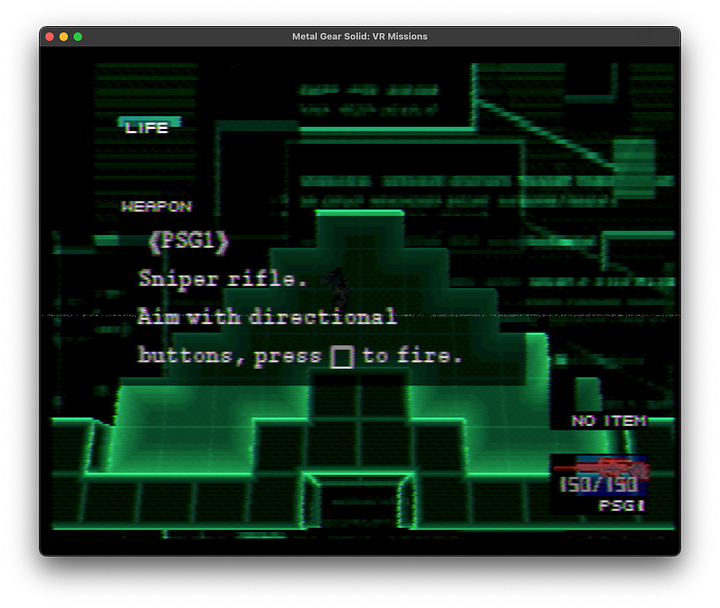
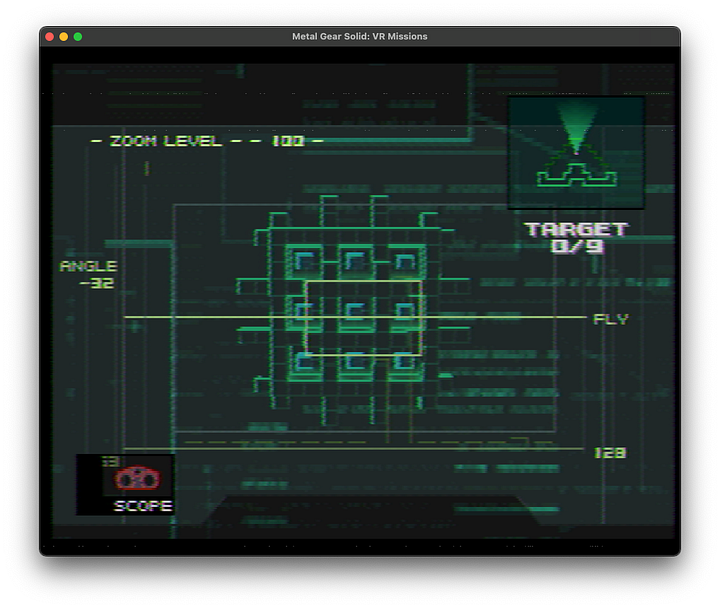
Sneaking mode leaves you unarmed, relying on your stealth skills to get around guards and obstacles undetected to reach the goal.
There are also sneaking levels that allow you to practice sneakily eliminating enemies without being detected.
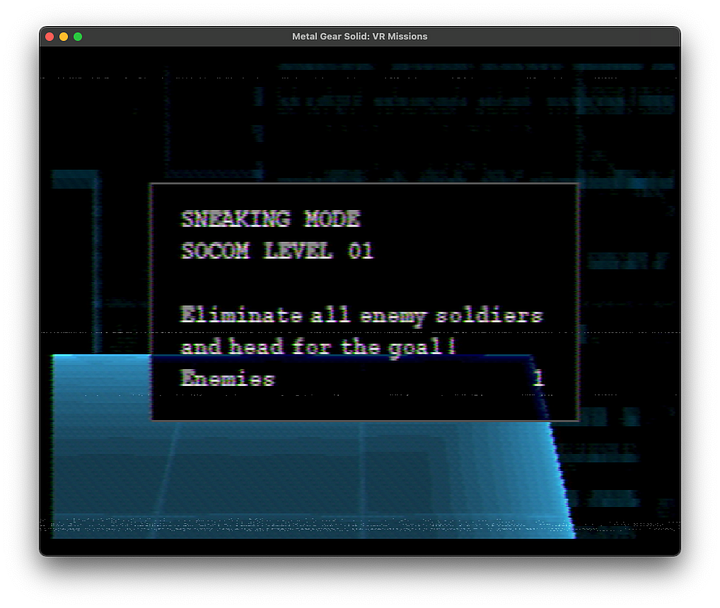

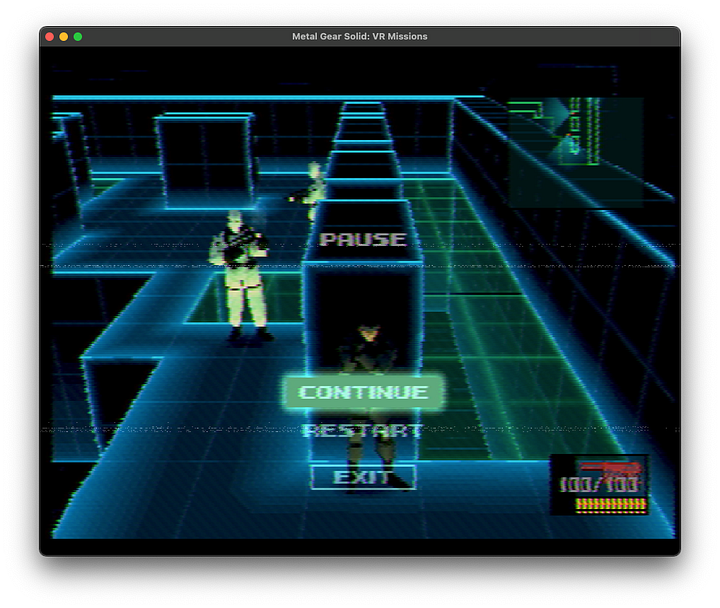

Of course, my favorite levels were the ones with stealth-equipped claymore landmines!
The Advanced levels take the skills you master in Sneaking and Weapon modes and applies them to more challenging levels. The Special levels take a bit of a twist from what we’d experienced so far adding things like murder mysteries, giant enemies, and levels where you get to play as the cyborg ninja Grey Fox!
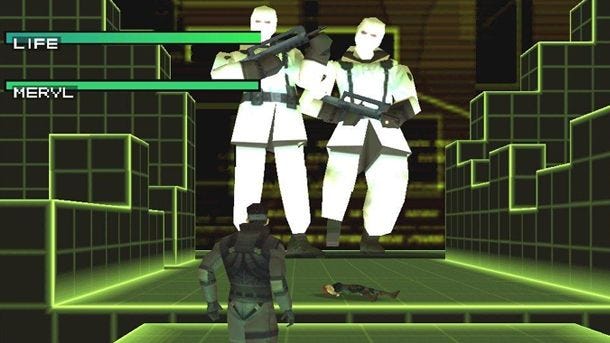
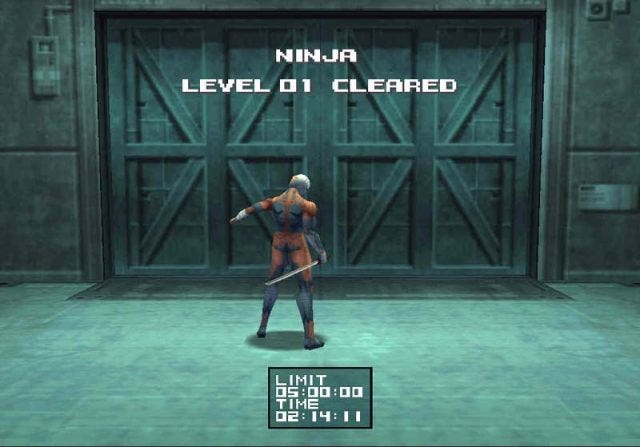
Control-wise you’re looking at the same thing you have in the normal Metal Gear Solid game. Movements are pretty fluid, but weapon controls are a little clunky. You’ve got to watch your noise level when walking over certain sections of flooring just like in MGS, and there are even specific levels with virtual snow that leave footprints behind that the enemy can spot. These are all mechanics of the game, but each level is quite short giving it a mini-game feel which takes a lot of the pressure to get it right. It really does give a feeling of training to prepare you for the mission of the real game.
Graphics
For the time, Metal Gear Solid and VR Missions were pretty good. There were games on the original PlayStation that were visually more impressive, but there were also games that looked SOOO much worse. In saying that, the limited design of the characters faces are understandable due to the amount of polygons, textures, and overall level design each level has. Also, while not featured in VR Missions, the main game was one of the first games I can remember that used it’s in-game engine for cutscenes instead of using FMV or pre-rendered graphics. This also helped keep you mentally in the game and — I think — helped it avoid the trap of feeling like it aged poorly.
Soundtrack
The soundtrack to the game is not as good as it was for the main game, and I would say both are inferior to both the MGS2 and MGS3 soundtracks, but this is still a solid little OST. With the limited gameplay modes reusing tracks — for instance, all of the sneaking missions use the same music, all of the weapons missions use the same music, etc — it can get pretty repetitive after a while. However, the songs aren’t bad and if you’re a fan of video game music, you should give it a listen.
Also, fun fact, the sneaking missions song (5:20) is actually a remake of the Theme of Tara from the original Metal Gear on the MSX.
Rating: 7.8/10
Gameplay: 8/10
Story: n/a
Graphics: 7/10
Soundtrack: 7/10
Nostalgia Wild Card: 9/10
Overall Rating and Final Thoughts
For what it is — an expansion to a wildly successful and popular stealth-action game — VR Missions is a lot of fun. I love the Metal Gear series but honestly I just don’t have the time to sit down and devote 20+ hours to any game right now. This allows the player to enjoy the gameplay of Metal Gear in short bursts and without worrying about messing up a perfect stealth run. Is it the best game on the PS1? No. Is it a bad game, at all? No. Would I play it again? Heck yes I would! Would I prefer it over the regular Metal Gear Solid? No way, but it was fun and it’s worth your time and attention even if it’s just so you can say you played it.
While not anything groundbreaking or revolutionary, VR Missions was a solid little game… do you get it? Solid? I’ll see myself out…





